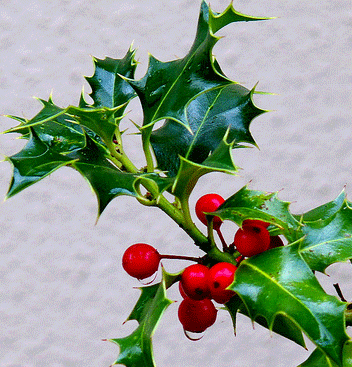Holly - Cuilleann

Because of its association with Christmas, holly is one of our more easily recognised native trees. It is probably the most ornamental of these native trees and many variegated and golden varieties are cultivated.
It is a visually attractive small tree and is very suitable for gardens as a specimen tree or hedge as it is slow growing and very dense. Trees can live for up to 250 years and the hard, pale wood is valued for carving, inlaying and engraving. They are found in oak-woods, on ditches or high up in mountain gullies where there is shelter from the harsh upland winds. Today, the holly forms the shrub (or lower) layer in some of our oldest woods. In some parts of the country it is considered unlucky to cut down holly, and it is often left as a standard in hedgerows.
Cuilleann, its Irish form, is found in many townlands names: Glencullen, Co Dublin and Moycullen, Co Galway. Cullenagh and Cullentragh (the former is more usual in the south and the latter in the north) both describe a place that abounded with holly. The holly tree is either male or female and only the female has red berries. Holly and ivy were traditionally used for mid winter or Christmas decorations symbolising the green life to come. Holly was the Druids most sacred tree and was associated with the ending of the winter solstice. The pre-Christian Romans considered holly the plant of the God Saturn. As a result, holly has traditionally a strong association with Christmas. If the indiscriminate cutting of whole trees, now a practice at Christmas time, continues the holly could soon become an endangered species. The tallest tree is 21 metres.
